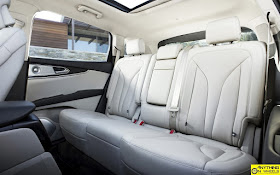Chevrolet has been in existence since 1911 but not until 1918 did they build their first pick-up truck. Inspired by workers who modified vehicles to lug things around the factory, the One-Ton truck was born. Little did the folks at Chevrolet knew they would be making these trucks in hundreds of thousands a whole century later.
From 1918 till date in 2017, a staggering 85 million trucks have rolled out wearing the iconic ‘bowtie’ badge. With the 2018 Model Year, Chevrolet Trucks are stepping into their 100th year. As one would expect, Chevrolet is in celebratory mood and kicked off a series of commemorative events at the State Fair of Texas late September.
Special ‘Centennial Edition’ Trucks
Car-makers usually celebrate milestones like these by doling out special editions of their popular models. Chevrolet isn't averse to it and duly rolled out special ‘Centennial Editions’ of its best-selling Silverado and Colorado trucks.
While the Silverado Centennial Edition is based on the LTZ Z71 trim in Crew Cab configuration, the Colorado Centennial Edition is based on the Z71 trim and available in Crew Cab and Extended Cab configurations.
Wearing distinctive ‘Centennial Blue’ paint job, exclusive heritage bowtie emblems in places you would expect and more, 100 year badges proudly stuck onto the front doors, chrome embellishments and bigger wheels, these special editions are said to be inspired by the colours and design cues found on early Chevrolet Trucks. As you would have noticed, all changes are purely cosmetic with the mechanicals remaining untouched.
A one-off, customized, Classic Truck
The Centennial Editions are good alright but what set our heart beats racing is something different. And old! Yes, this one-off, customized, classic C/10 Concept that Chevrolet showcased at the 2017 SEMA Show as part of the Centennial Celebrations is the kind of stuff our dreams are made of.
Before we get to this one-off stunner, let’s go back to 1960. That was the year Chevrolet introduced the C/K Series of trucks, widely considered as the beginning of the modern era of pick-ups. The 1967 C/10 that Chevrolet chose to customize belongs to the advanced, second-generation C/K Series that debuted in 1967.
This particular truck started its life as a long-bed model with a big cab window, a rarity in its day. Chevrolet Performance came in, shortened the frame, chopped off a portion of the bed, lowered the suspension, slapped on a set of 20-inch wheels and voila, we have what you see here.
If you are impressed just by those classic lines and that perfect stance, wait until you know what’s under the hood. The crazy folks at Chevrolet Performance have crammed in a ZZ6 small-block crate engine in there, good for a whopping 405 horsepower and a staggering 583 Nm of torque. Mated to it is a 4-speed automatic transmission from Chevrolet Performance’s lineup of factory-matched powertrain systems.
Visually, the C/10 Concept gets the same heritage bowtie emblems and the Centennial Blue paint job that the special edition Silverado and Colorado come with. Forged wheels, upgraded brakes, wider tires, LED exterior and interior lighting, brushed-finish panels and rounded, smoothened bumpers complete the package. The result is, in one word, stunning.
You’re sold, right? Unfortunately, this is a one-off show car and you can’t buy one even if you want to. Too bad, Chevy. Too bad.
And some more…
Ongoing celebrations, in addition to the aforementioned special editions, include the expansion of hitherto-Texas-only “Truck Legends” program across the United States of America. The program recognizes customers who own a Chevy Truck with more than 100,000 miles on the odometer or those who have purchased or leased more than one new Chevy Truck in their lifetime. A wide range of branded accessories and merchandise are also available.
The 100-day celebration will conclude with a Chevy Trucks Centennial Celebration event on 16th of December at the Texas Motor Speedway.
Arch-rival Ford concluded centenary celebrations of its own earlier this year and with Chevrolet joining suit, expect the long-standing and legendary tussle to truck supremacy spill over to a second century.






















































